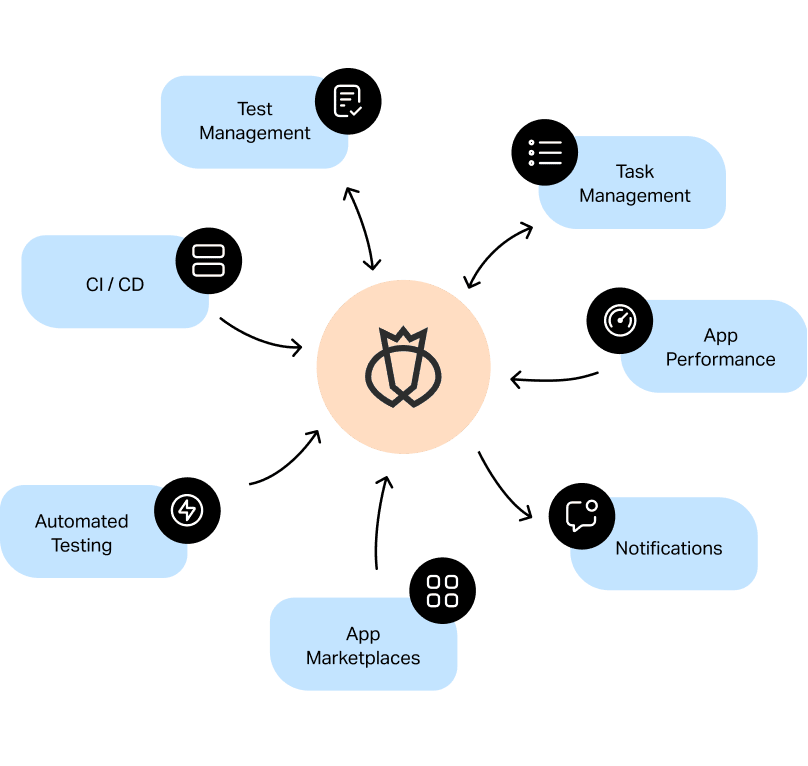Effective Automation Testing: Enhancing Software Application Integrity and Speed
Effective Automation Testing: Enhancing Software Application Integrity and Speed
Blog Article
From Manual to Automated Testing: A Comprehensive Overview to Transitioning Efficiently and Effectively
In the realm of software application testing, the shift from manual to automated procedures has become an increasingly important shift for organizations seeking to improve performance and precision in their testing practices. As modern technology remains to advancement, the requirement for reliable and seamless automatic testing methods has actually never been more pressing. The journey from handbook to automated screening is not without its challenges, but when approached purposefully and with a clear plan in mind, the benefits can be substantial - automation testing. In this extensive guide, we will explore key steps and considerations necessary for a successful change, from the first selection of devices to the combination of automation into existing operations. Stay tuned to discover the insights that will certainly aid lead the way for a smoother and much more efficient testing procedure.
Benefits of Automated Checking
Automated screening uses various advantages, improving effectiveness and accuracy in software program growth processes. Automated tests can be run at the same time on several devices and running systems, drastically speeding up the testing phase contrasted to hands-on testing.
Moreover, automated screening guarantees a greater level of precision in detecting flaws. Considering that automated examinations follow predefined scripts, human error is lessened, bring about even more dependable examination outcomes. Consistency in screening is also improved, as automated examinations carry out the very same steps precisely each time they are run. This consistency is vital in making sure that all performances of the software application are thoroughly tested, reducing the possibility of undiscovered bugs sliding via to production.
Selecting the Right Devices

Firstly, assess your needs and goals. Recognize the scope of your task, the innovations entailed, and the ability collection of your group. This analysis will assist you determine the abilities and attributes you require in your testing devices.
Secondly, take into consideration the compatibility of the tools with your existing systems and procedures. Smooth assimilation with your existing software program growth lifecycle is necessary to make sure a smooth change to automation.
Furthermore, assess the scalability and adaptability of the devices. As your screening requires develop, the devices should be able to adapt and suit changes properly.
Last but not least, variable in the assistance and area around the devices. Robust support and an energetic customer area can supply important sources and assistance when applying automated testing. By very carefully thinking about these facets, you can select the right tools that straighten with your needs and established the phase for a successful change to automated testing.
Creating Efficient Examination Manuscripts

When crafting test manuscripts, it is vital to consider the specific requirements of the software program being evaluated and make sure that the scripts address all vital functionalities. Descriptive and clear calling conventions for examination scripts and test situations can improve readability and maintainability. Additionally, including mistake handling devices within the test manuscripts can assist in determining and addressing concerns immediately.
Furthermore, organizing examination scripts right into modular elements can enhance reusability review and scalability, reducing redundancy and boosting performance in examination script upkeep. Routine evaluations and updates to resource examine manuscripts are important to equal advancing software program demands and capabilities. By following these concepts, testers can produce efficient and durable examination scripts that add considerably to the success of automated screening procedures.
Integrating Automation Into Workflows
By seamlessly incorporating automated testing tools like Selenium or Appium right into the software advancement lifecycle, groups can accomplish faster feedback on code changes, leading to quicker pest detection and resolution. This integration permits for constant testing throughout the growth procedure, making sure that any type of problems are identified early on, resulting in higher software program high quality. Appropriate assimilation of automation tools needs partnership in between advancement, testing, and operations groups to develop a unified workflow that optimizes effectiveness and performance in providing high-quality software application products.
Making Sure a Smooth Transition
Effectively transitioning to automated testing involves meticulous planning and cautious execution to make the most of and lessen interruptions effectiveness in the software growth process - automation testing. To ensure a smooth change, it is crucial to start by conducting an extensive assessment of the present testing processes and determining locations where automation can bring one of the most substantial advantages. Engaging with all stakeholders at an early stage in the process, consisting of programmers, testers, and task supervisors, is vital for garnering support and buy-in for the automation campaign
Communication is key throughout this shift stage. Clear interaction of the objectives, benefits, and expectations of automated screening helps to manage any resistance or concerns that may arise. In addition, providing sufficient training and sources for employee to upskill in automation tools and strategies is crucial for guaranteeing a successful change.

Final Thought
To conclude, transitioning from handbook to automated testing provides various benefits, including enhanced efficiency and integrity. By picking the appropriate devices, composing effective examination scripts, and integrating automation perfectly right into workflows, companies can make certain a smooth and effective shift. It is vital to accept automation as a valuable possession in software application testing procedures to improve general high quality and efficiency.
In the realm of software application screening, the change from handbook to automated processes has become an increasingly important shift for companies looking for to enhance effectiveness and precision in their testing methods. Automated examinations can be run all at once on multiple gadgets and operating systems, considerably speeding up the screening stage contrasted to hands-on screening. Consistency in screening is also improved, as automated examinations execute the exact same steps exactly each time they are run.To guarantee the successful implementation of selected testing devices, the production of reliable test scripts plays a vital function in verifying the functionality and performance of automated procedures - automation testing. By following these principles, testers can develop robust and reliable examination scripts that contribute significantly to the success of automated testing processes
Report this page